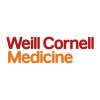What Is Coronary Artery Disease and How Is It Treated?
Coronary artery disease (CAD) is one of the most common types of heart disease, affecting millions of people worldwide, especially in the United States. It occurs when the arteries supplying blood to the heart muscle become narrowed or blocked due to the buildup of fatty deposits, known as plaque. This buildup restricts the flow of oxygen-rich blood to the heart, which can lead to chest pain, heart attacks, or even heart failure if left untreated. In this article, we will explore what coronary artery disease is, the causes and risk factors, symptoms to watch out for, and the various treatments available.

1. Understanding the Causes of Coronary Artery Disease
Coronary artery disease is primarily caused by atherosclerosis, a condition where plaque builds up inside the coronary arteries. Plaque is made up of fat, cholesterol, and other substances found in the blood. Over time, the plaque hardens and narrows the arteries, which can reduce blood flow to the heart muscle. This restriction can cause chest pain (angina) or more severe complications, such as a heart attack.
Several factors can contribute to the development of CAD, including:
- High cholesterol: Elevated levels of low-density lipoprotein (LDL), or "bad" cholesterol, increase plaque buildup.
- High blood pressure: Chronic high blood pressure can damage the walls of arteries, making it easier for plaque to form.
- Smoking: Tobacco smoke contributes to the buildup of plaque and damages the cardiovascular system.
- Obesity: Excess weight often leads to other risk factors like high blood pressure and high cholesterol.
- Diabetes: Diabetes increases the risk of CAD by affecting the body’s ability to regulate blood sugar levels.
Family history and a sedentary lifestyle are also significant factors. In some cases, CAD can run in families, particularly if there is a history of heart disease or high blood pressure.
2. Recognizing the Symptoms of Coronary Artery Disease
Many individuals with coronary artery disease may not experience noticeable symptoms, especially in the early stages. This is why it is often referred to as a "silent" disease. However, as the disease progresses and the arteries become more narrowed, symptoms can appear. The most common symptoms of CAD include:
- Chest pain (angina): This is the most common symptom of CAD. It is usually described as a squeezing, pressure-like sensation in the chest.
- Shortness of breath: Difficulty breathing, especially during physical activity, can occur when the heart doesn’t receive enough oxygen-rich blood.
- Fatigue: Feeling unusually tired or weak can be a result of reduced oxygen flow to the heart.
- Dizziness or lightheadedness: Reduced blood flow can affect the brain, causing fainting or a feeling of unsteadiness.
- Heart palpitations: A sensation of irregular or rapid heartbeats can occur when the heart struggles to function effectively.
If you experience any of these symptoms, especially chest pain or shortness of breath, it’s crucial to seek medical attention immediately. Prompt treatment can help prevent serious complications like heart attacks.
3. Diagnosing Coronary Artery Disease
Diagnosing coronary artery disease typically begins with a physical exam and a review of your medical history, including your risk factors. Your doctor may recommend several tests to confirm the diagnosis and determine the severity of the disease:
- Electrocardiogram (ECG or EKG): This test measures the electrical activity of your heart and can help detect heart attacks or abnormal heart rhythms.
- Stress testing: A stress test monitors your heart's performance under physical stress (usually through exercise) to identify any reduced blood flow.
- Coronary angiography: This is an imaging test that involves injecting a contrast dye into the coronary arteries to identify blockages or narrowing.
- CT coronary angiogram: This is a non-invasive imaging test that uses CT scanning to look for coronary artery disease.
Depending on the results of these tests, your doctor will recommend an appropriate treatment plan.
4. Treatment Options for Coronary Artery Disease
Treating coronary artery disease typically involves a combination of lifestyle changes, medications, and, in some cases, medical procedures. The goal of treatment is to manage symptoms, reduce risk factors, and prevent further complications such as heart attacks or heart failure.
4.1 Lifestyle Changes
Adopting a heart-healthy lifestyle is one of the most effective ways to manage CAD. Here are some lifestyle modifications that can help:
- Diet: A diet low in saturated fats, trans fats, and cholesterol can help reduce plaque buildup. Focus on eating fruits, vegetables, whole grains, and lean proteins.
- Exercise: Regular physical activity can help strengthen the heart, lower blood pressure, and improve cholesterol levels.
- Quitting smoking: Smoking cessation significantly reduces the risk of further plaque buildup and heart complications.
- Weight management: Maintaining a healthy weight can help control blood pressure, cholesterol, and blood sugar levels.
4.2 Medications
Doctors may prescribe medications to help manage coronary artery disease, such as:
- Statins: These drugs help lower cholesterol levels and prevent further plaque buildup in the arteries.
- Beta-blockers: Beta-blockers can reduce heart rate and blood pressure, helping the heart work more efficiently.
- Blood thinners: Medications like aspirin may be prescribed to prevent blood clots, which can lead to heart attacks.
- ACE inhibitors: These medications can help relax blood vessels, lowering blood pressure and easing the heart's workload.
4.3 Medical Procedures
In more severe cases, doctors may recommend procedures to restore blood flow to the heart, including:
- Angioplasty and stent placement: This procedure involves inflating a balloon to open blocked arteries and inserting a stent to keep them open.
- Coronary artery bypass grafting (CABG): In cases of severe blockages, bypass surgery may be necessary to reroute blood around blocked arteries.
5. Prevention of Coronary Artery Disease
While coronary artery disease is a serious condition, it is preventable and manageable with the right approach. Preventing CAD involves maintaining a healthy lifestyle, including regular physical activity, a balanced diet, and avoiding smoking. Regular check-ups and screening tests can help detect early signs of CAD, allowing for timely intervention.
Managing risk factors such as high blood pressure, high cholesterol, and diabetes can significantly reduce the likelihood of developing CAD. Working closely with your healthcare provider to monitor and control these factors is essential for maintaining heart health.
SEO Title: Understanding Coronary Artery Disease and Its Treatment Options SEO Keywords: coronary artery disease, treatment for CAD, heart disease, heart attack, atherosclerosis, cholesterol, prevention of CAD SEO Description: Learn about coronary artery disease, its causes, symptoms, and the most effective treatments available. Understand how to manage and prevent heart disease for better heart health.




















UVA Health UVA Cardiology, part of Culpeper Medical Center
uva coronary care unit
501 Sunset Ln, Culpeper, VA 22701, USA